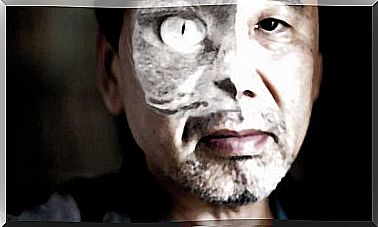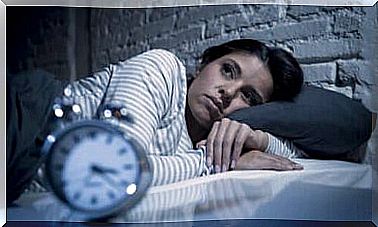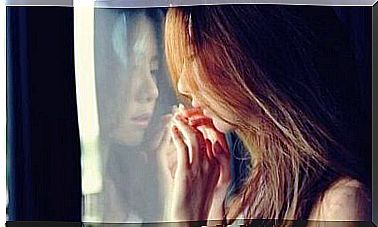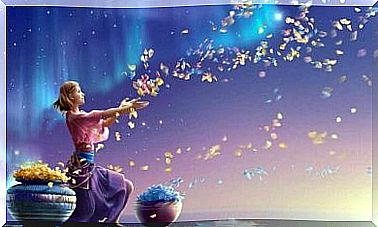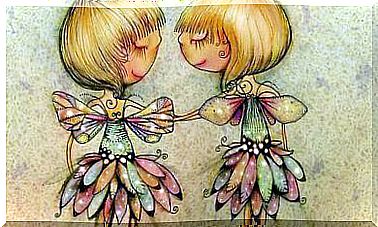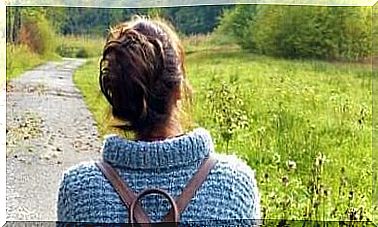Pareidolia: See Meaning In Shapes Everywhere
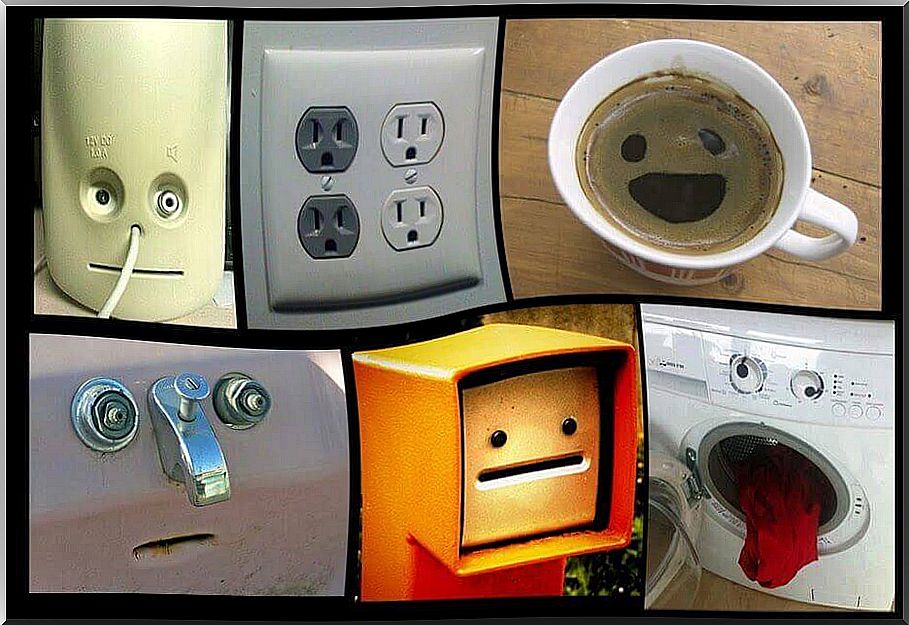
Have you ever seen the shape of a face in a lock? Or maybe an animal in a cloud? These perceptions are not abnormal. They are actually quite common, and could be examples of what we call pareidolia. Pareidolia is defined as a psychological phenomenon in which any random stimulus – such as an image – is wrongly perceived as a recognizable form. The individual creates an organization and assigns meaning to an ambiguous or poorly structured stimulus.
Examples of pareidolia are the faces we see drawn in the profile of a mountain, or in the smoke coming out of a chimney. Pareidolias are not pathological. In fact, perhaps the inability to form them could be pathological. Thus, they are just a magnificent example of what our minds are capable of creating, of an anomalous mental experience, and the term anomaly, in this case, does not imply pathology, disease or disorder.

Pareidolia is a perceptual distortion
Disorders of perception and imagination are usually classified into two groups: perceptual distortions and mistakes. Perceptive distortions are only possible through the action of the sense organs.
These perceptual distortions occur when a stimulus that exists outside of us, and that is accessed by the sensory organs, is perceived in a different way than it would normally be perceived. The anomaly lies in the fact that the physical features of the external world are perceived in a distorted way, creating other images that are not actually there.
By distortion we mean any of these possibilities:
- Perception different from the usual and more likely, taking into account previous experiences or the way other people perceive the stimulus.
- A different perception than what would be logical if we consider only the physical configuration of the stimulus. This happens in illusions. This is also the case with pareidolia.
In the case of perceptual mistakes, a new perception is produced. This new perception usually coexists with the rest of normal perceptions. Perceptive mistakes are not based on existing stimuli from the outside world, as is the case, for example, with hallucinations.
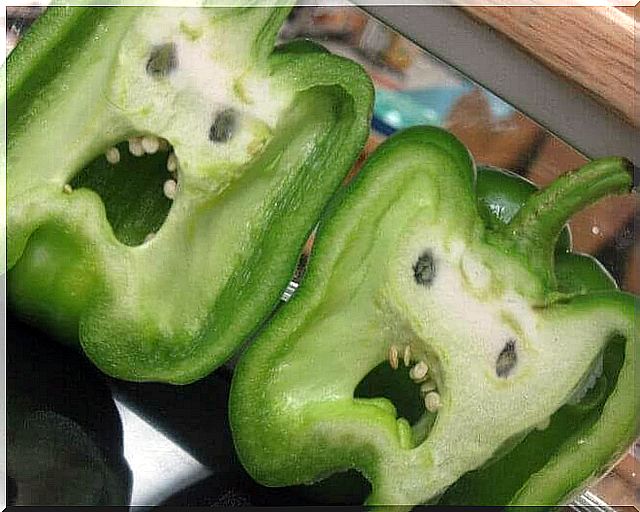
How many types of perceptual distortions are there?
Among the perceptual distortions, we find the following classification:
- Hyperesthesias and hypoesthesias. They are anomalies in the intensity of perception (for example, hyperalgesia and hypoalgesia, which is the condition of feeling more or less pain than the normal stimulus would bring).
- Anomalies in the perception of characteristics. It refers to color visions and changes in the perception of the color of objects.
- Metamorphosis. It assumes an anomaly of perception in size or shape.
- Anomalies in perceptual integration. They are uncommon anomalies that sometimes appear in some organic disorders and in schizophrenia.
- Illusions. Here we have two types: the sensation of presence and the pareidolias – which are the subject of this article.
As we can see, there are several perceptual distortions that we can experience, one more surprising than the other. In this specific topic we are dealing with, we see that pareidolia is just a type of distortion, being an illusion.
Illusions: anomalies in the structuring of ambiguous stimuli
An illusion can be described as a distortion of perception, which is defined as a “misperception of a concrete object”. Thus, illusions are perceptions that do not correspond to the objective physical characteristics of a concrete stimulus.
From a classical psychological perspective, illusions are the product of a disposition, or tendency, that humans have to organize into a meaningful whole elements more or less isolated from each other in relation to their background. There are many examples of illusions, such as the Müller-Lyer illusion or reversible figures. We can easily find them on the internet, and one is below. The illusion is that although it doesn’t look like it, the two horizontal lines are the same size.
Pareidolias influence human culture and religions
There are many phenomena that, observed in a superficial way, can be quite curious and even a reason for jokes. This is the case with pareidolia. If we search the internet we can find references to a photograph of an explosion, or the surface of a planet, a cloud or simply a stain on the wall, where people claim to see religious images, extraterrestrials, faces of people, animals or sacred texts.
The phenomenon can also occur in auditory perceptions, for example in the song of a bird or in the echo that the Kukulkán pyramid in Chichen Itzá, which is in the photo, makes. We can also see it in the white noise of a television, or on discs that are played backwards, on which many say they hear satanic messages.

Aniconic religions – which reject icons – such as Muslim and Jewish have their own manifestations associated with pareidolia. Thanks to her, Muslims see the name of Allah in the clouds, in patches of snow in the mountains or even in the northern lights, among other manifestations that have been called Muslim pareidolias or Islamic miracles.
Among the faithful of the Jewish religion, the so-called secret codes of the Torah are known. In them, mathematicians who are experts in statistics believe they find prophetic texts of present and future events. Well then… it is thought that the phenomenon is probably like that of pareidolia, working under the same mechanism as the mind.
A known case of pareidolia: the Faces of Bélmez
The Faces of Bélmez is a phenomenon considered paranormal by practitioners of parapsychology. This phenomenon consisted of the appearance of pigmentations, identified as faces, on the floor of a house located in Bélmez de Moraleda. Bélmez is a small town in the province of Jaén, Spain.
This phenomenon began to occur in 1971. Adepts of parapsychology considered this case as, without a doubt, the most important paranormal phenomenon of the 20th century. Several scholars, however, have already highlighted the event as a fraud.
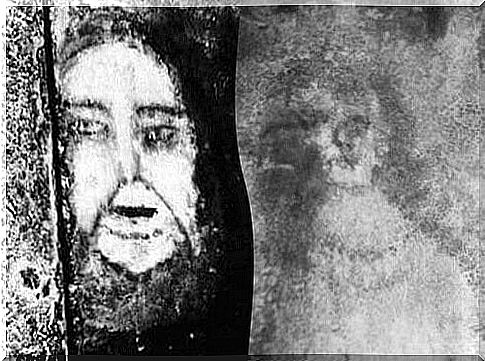
This may have been wrongly perceived due to the phenomenon of pareidolia. The faces that appeared in the house, in the form of moisture, may have been mentally “created” by perceptual distortions. Still, the faces that appeared in Bélmez looked so real that it was also thought that they had been made in secret by the lady of the house.
In any case, pareidolia is a phenomenon that does not cease to amaze us. There are explanations in the way we organize the stimuli we perceive in our mind, and it is simply an illusion or perceptual distortion.
